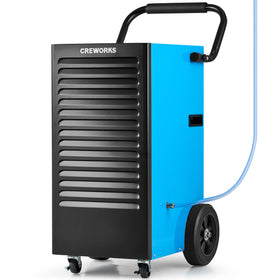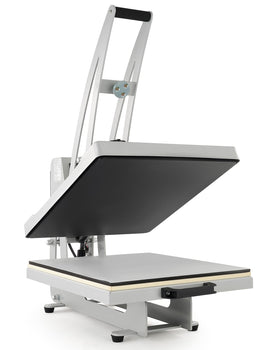With over 10000+ orders
With over 10000+ orders
For anyone who regularly deals with large quantities of insulated wire, whether from construction, demolition, HVAC work, or scrap recycling, an automatic wire stripping machine is a fantastic upgrade.
It takes a job that’s slow, repetitive (and sometimes painful), and turns it into something fast, clean, and surprisingly easy.
The big drawback with automatic wire stripping machines, though, is that they appear extremely complex, especially if you have never used one before. Also, there is the question of determining if the machine even works with your type of wire.
So, are automatic wire strippers difficult to use? And how do you get one that does the job?

Once you have the right machine, using an automatic wire stripping machine is surprisingly simple. The key is setup: get the blade height right, feed the wire correctly, and let the machine do the work. Straight wire feeds better.
Before feeding wire into the machine, straighten your wire, loosen knots, and clean it up. Check for the following:
If needed, uncoil long wires on the floor and pull gently to straighten them.
Adjusting the blade height is the most important part of the process of using an automatic wire stripping machine. You have to make sure the blade cuts just deep enough to slice the insulation, but not cut the copper or aluminum conductor inside.
You adjust the blade until:
Many machines have adjustment knobs for adjusting cutting blade height, a quick-set blade tension, and depth indicators. Take a minute to dial this in: it saves you from damaging expensive wire.
Some automatic wire stripping machine models let you widen or narrow the feed channel to fit different wire diameters. Other machines come with different feed holes for different kinds of wires.
Make sure the wire sits snugly but can still glide through.
Once the blade and feed slot are adjusted:
Hold the wire firmly and insert it into the feed channel. Ideally, you want the machine to grab the wire automatically, pull it through the blade, and split the insulation open in one smooth pass. If the machine doesn’t grab the wire:
Once the insulation is scored, it usually slides off easily by hand after the wire exits the machine. For thicker insulation:
Repeat the process, and you’ll strip wire far faster than with any manual method.

Before you buy or think of using an automatic wire stripping machine, make sure it actually fits the wire you plan to strip. Not all wire is the same… and not all wire strippers can handle every type of insulation, thickness, or material.
Here’s what to look at when using an automatic wire stripping machine: wire diameter, insulation, type of feed (manual vs insulated), and motor power.
Different types of automatic wire stripping machines accept different wire sizes. So start with evaluating the diameter of the wire you intend to strip:
So, always check your most commonly used wire sizes and match them with the machine’s capacity. Some automatic wire stripping machines, like Creworks’ automatic wire stripping machine, have 5 separate feed holes and can cover wires from 0.06" to 1" (1.5 to 25 mm), letting you safely and easily handle the most common wire sizes.
Different automatic wire stripping machines handle different types of insulation. Soft insulation (PVC, rubber), hard insulation (armored, BX), multi-core cables, or coaxial or shielded cables.
If you work with tougher insulation, you’ll need a machine with stronger feed wheels and an adjustable cutting depth.
If you’re stripping hundreds or thousands of feet of wire, automatic feeding is worth every penny.
When it comes to wire stripping machines, more power means easier stripping, less stalling, and smoother feeding.
If you have heavy, thick, or commercial-grade wire, choose a machine with a stronger motor.
Knowing your wire type is the first step to getting the machine that will make your workflow easier, not harder.

Even though these machines are easy to use, beginners often run into the same issues. Avoid these mistakes, and you’ll get cleaner results, faster.
Mistake #1: Do not set the blade too deep. This can damage or score the conductor, reducing scrap value or ruining usable wire.
Mistake #2: Dot feed in a bent wire. A bent wire can bind the machine, jam the feed wheels, and produce uneven cuts. Always straighten the wire first for smoother stripping.
Mistake #3: Do not use the wrong slot size. If the slot is too loose, the wire won’t strip. Too tight, and it won’t feed at all.
Mistake #4: Do not run the machine too fast. High speed is great… unless it burns insulation instead of cutting it. Start slow, then increase the feed rate once the cut is clean.
Mistake #5: Ignoring Safety Gear. You absolutely need gloves, eye protection, and a clean workspace. Wire shards and insulation fragments can fly.
| Feature | Automatic Wire Stripping Machine | Manual Wire Stripping Tools |
| Speed | Extremely fast; ideal for bulk stripping | Slow; best for small jobs |
| Effort Required | Very low; machine feeds and strips wire | High; requires constant hand strength |
| Consistency | Uniform cuts and clean copper every time | Inconsistent results, especially with tough insulation |
| Wire Size Capacity | Handles small to very large cables | Limited; struggles with thicker or hardened insulation |
| Setup Time | Initial blade adjustment needed, then quick operation | Minimal setup, but slower overall workflow |
| Learning Curve | Easy once blade depth is set correctly | Easy, but physically demanding for long sessions |
| Safety | Safer hands stay away from the blade | More risk of hand cuts or repetitive strain |
| Best Use Case | Large amounts of wire, recycling operations, and tradespeople | Occasional stripping, small volumes of wire |
| Output Quality | Highest value scrap due to clean, unscored conductor | More likely to score or gouge copper |
If you regularly deal with large piles of insulated wire, whether from construction, demolition, HVAC work, or scrap recycling, you’ve probably wondered if an automatic wire stripping machine is worth the investment.
Here are the essentials worth paying attention to:

Using an automatic wire stripping machine is far easier than most people expect. Once you match the machine to your wire type and learn how to set blade depth correctly, the process becomes fast, clean, and incredibly efficient.
Whether you strip wire for work or recycling purposes, an automatic machine will save you time, effort, and money, and deliver results no manual stripper can match.
Here are the top 5 uses for your wire stripping machine.












Leave a comment